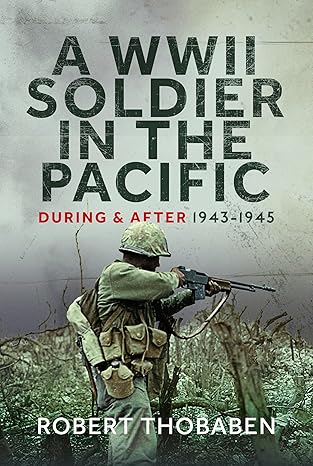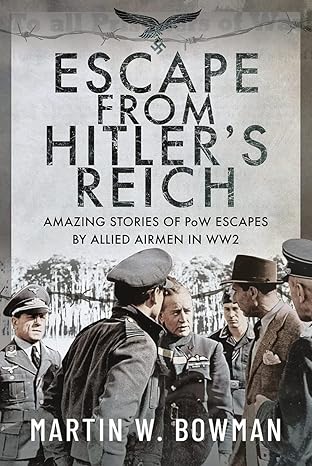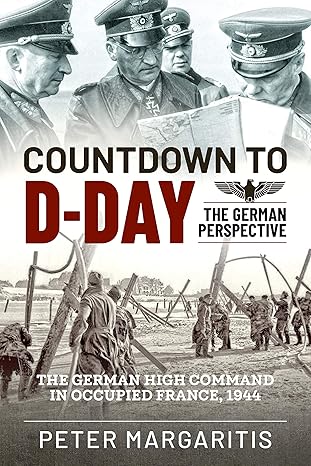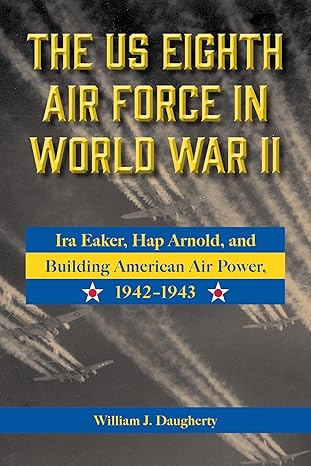SAARF – Special Allied Airborne Reconnaissance Force
By Michael F. Dilley
In early 1945, with the Allied forces closing in on Germany from the west and Russian forces from the east, there was concern on the Supreme Headquarters Allied Expeditionary Force (SHAEF) staff about the continued safety of Prisoners of War (POWs) in the hands of the Germans. Some intelligence reporting indicated that the Germans may be moving POWs out of camps in areas where Allied military forces were near at hand. Fears of German maltreatment of POWs in the event the war was lost had been raised earlier but planning for those contingencies did not receive a high priority.
As the situation became more of a reality and concerns were raised that camp personnel might decide to massacre prisoners, the priority for planning was raised. The new plans centered on establishing Contact Teams which could be parachuted into or near POW camps to observe and report activities relative to prisoner safety or to intercede in the event of any observed untoward actions being directed against prisoners. Based on limited intelligence reporting, conditions in some of the camps were believed to be bad. There was also uncertainty about whether Hitler might order that actions be taken against prisoners in view of Germany steadily losing ground in the war. One scenario imagined prisoners being killed; another that the camps would simply be abandoned and the prisoners might starve or otherwise be left to fend for themselves. The renewed planning called for parachute battalions to be held on alert in reserve, prepared to jump in on camps if any Contact Team notified them of imminence of killings or mass evacuation of prisoners. Initially, the 501st Parachute Infantry Regiment of the U.S. 101st Airborne Division was designated as the unit on stand-by.
In early March 1945, SHAEF created a multi-national organization to oversee and coordinate the activity of the Contact Teams. Initially this organization was to be manned by volunteers from among volunteer British, American, and Belgian paratroopers who would be part of a “dangerous undercover mission” which was originally designated Operation VICARAGE. This organization was re-designated as the Special Allied Airborne Reconnaissance Force (SAARF) by its new leader. A British officer, Brigadier J.S. Nichols, was appointed as commander and an American, Colonel J. E. Raymond, as deputy commander.
The basic Contact Team was to be composed of three men. Team composition was to consist of two officers and an enlisted radio operator. Unlike some previous organizations, specifically the OSS/SOE Jedburghs, all members of each team were to be of the same nationality. A high priority was placed on finding team members with German or other Eastern European language capability. In all, SAARF consisted of 120 French, 96 British, 96 American, 30 Belgian, and 18 Polish soldiers. Among the Americans, the volunteers were drawn from OSS units (including some former Jedburghs), the 82nd and 101st Airborne Divisions, a small group from the 13th Airborne Division, and one Navy radio operator who had previously been part of the OSS. The British, Belgian, and French soldiers came from several special operations forces (including the SOE and the SAS brigades), while the Poles were drawn from the Polish Independent Grenadier Company.
Several of the volunteers were women who were from the SOE who had parachuted into France and served with the French Resistance. The SAARF planners decided that, despite the impressive records the women in SAARF made in their previous assignments, they would not be assigned to any of the airborne teams. This did not preclude them being deployed on the air transportable or jeep mounted teams. Needless to say, the women were disappointed.
Those volunteers who were not already airborne qualified were sent to the No. 1 Parachute Training School at Ringway, England for training and qualification. Training was to be conducted by the British Special Operations Executive (SOE), with assistance to be provided by the American Office of Strategic Services (OSS). The training objective was to have 60 teams ready to be dispatched by 1 May. Altogether the plan called for 120 teams of 3 people. In order to facilitate training as well as command and control of the teams, SAARF was organized into three Contingents. The 1st Contingent was comprised of the British and Belgian teams; the 2nd Contingent included the American and Polish teams; and the 3rd Contingent was made up of the French teams.
Headquarters for SAARF was located at Sunningdale golf course in Wentworth, Surrey, England which had formerly been used by the 21st Amy Group. OSS and SOE were tasked to provide all training and support personnel. The 1st Allied Airborne Army had supplied the operational personnel. Command and control of SAARF remained with SHAEF.
While the Contact Teams were in training, SHAEF prepared leaflets in German to be dropped in front of the advancing Allied units. These leaflets warned German units that any captured SAARF personnel were not to be considered on a terrorist but on a humanitarian mission. A strong warning was contained in the leaflets that any SAARF personnel executed by German forces would be considered a war crime and dealt with harshly following the end of hostilities. The leaflets were dropped in late March.
As the team training progressed and general plans for their deployment were made, the progress of the war impacted the planning. On 24 March, in a move predicted the day before by Axis Sally on Radio Berlin, Operation VARSITY, the airborne leap across the Rhine, kicked off with parachute and glider assaults, moving allied forces into Germany in force and even closer to Berlin.
In Mid-April, SAARF received a request for a mission to be deployed in the vicinity of the prison camps in and around Altengrabow. Planning went into high gear but the mission was almost immediately rejected. On 21 April, the Belgian government requested that 8 of its 10 Contact Teams be sent to Brussels. There the teams were to be used in a ground role by various Army Groups to collect information available concerning conditions in POW camps. Almost as soon as these teams were dispatched SAARF reorganized. The 60 Contact Teams that had already completed their training were designated for airborne missions while the others were designated for either air or ground transportable missions.
On 23 April, an urgent request was made to SAARF to send in six Contact Teams to the Altengrabow camps, the mission that had earlier been rejected by SAARF. This request was based on information that prisoners were being moved further east and may possibly be being mistreated by camp personnel. The previous plan was reinstated and Contact Teams were put on alert for deployment in two days. The Contact Teams were placed under the command of British Major Phillip Worrall, an SOE asset from the South Wales Borderers.
This mission was given the code name of VIOLET. The primary mission target was Stalag XIA and other camps in the Altengrabow area. These camps were located between the Allied divisions pressing in from the west and Russian units closing in from the east. The six Contact Teams, whose members would meet for the first time at the mission briefing, and their make-up were as follows: Drop Zone 1: ERASER Major Phillip Worrall British team
BRIEFCASE 2nd Lieutenant Cousin French team
Drop Zone 2:
PENNIB Major Sam Forshall British team
CASHBOX Captain J. Brown American (OSS) team*
Drop Zone 3:
SEALINGWAX Captain Paul Aussaresses French Team
PENCIL Captain Warfield American (504th PIR/OSS) team
*Team included one officer and two radio operators
During the mission briefing, the various Contact Team members were each given a letter of authority, which identified them as SAARF personnel. The letters were in English on one side and German on the other side. Each team member was identified in his letter by name, rank, and serial number. The mission was described as to determine if Allied POWs were being treated in accordance with the Geneva Convention and requested that any assistance from camp personnel be given upon request. The letters were signed by Brigadier J.S. Nichols, the SAARF commander, and General T.J. Davis, an American.
On 25 April, at 2030, three planes lifted off from their departure airfield at RAF Great Dunmow. Operation VIOLET had begun. In a not unusual airborne drop, the Contact Teams were scattered in the air, and consequently on the ground. No immediate attempt was made by the six teams to contact any of the camps. Within a few days, ERASER team was captured by Germans and moved immediately to Stalag XIA. Soon after, 2nd Lieutenant Cousin of BRIEFCASE team and the OSS radio operators of CASHBOX team joined them in the prison camp.
After some discussions with the Stalag XIA commandant, Colonel Ochernal, Major Worrall convinced him that both Allied and Russian forces were closing in on his camp and urged him to cooperate with the SAARF members. Colonel Ochernal agreed to allow the SAARF Contact Team members already in the camp, under the close observation and supervision of German personnel, to review conditions in the camp and even to transmit messages back to SAARF Headquarters. In a surprise move, Colonel Ochernal produced a captured SOE radio for Major Worrall to use.
Major Worrall reported back on the members of SAARF who were present in the camp and that they were being treated by the Germans with a limited amount of courtesy although there was still a good deal of tension within the camp. He went on to report that there were fewer prisoners in the general area than had been anticipated. Expectations prior to the operation kicking off had been that there would be as many as 100,000 prisoners in the area. It turned out that there were only about 20,000 POWs there; about 2,000 of them were Americans and British as well as some French and Belgians.
On 2 May, SAARF Headquarters radioed Major Worrall that an agreement had been reached that provided that the nearby American 83rd Infantry Division would supply trucks to begin the immediate evacuation of Allied POWs. The 83rd Division had, in mid-April, liberated a subordinate concentration camp of the notorious Buchenwald, located at Langenstein. Colonel Ochernal had agreed to provide security details for truck convoys. The next day, 70 trucks and 30 ambulances arrived at Altengrabow. There were 40 war correspondents in the convoy who had come to witness the prisoners’ liberation. The evacuation began immediately. This continued until the afternoon of 4 May. At that time forces from the Russian army arrived at the camp and took control. The mood in the camp changed with the arrival of the Russians. However, the Russians permitted the remaining Western prisoners to depart but would not allow the evacuation of any of the Poles or Italians, even though these prisoners had requested repatriation to the West.
In the morning of 5 May, Major Worrall was told by the senior Russian officer that, despite Worrall’s objections, the SAARF team members in the camp had two hours to gather their gear and return to their own lines, and that the Russians would handle all further matters concerning the camp and prisoners from that point on. For all intents and purposes, Operation VIOLET was concluded. The operation had not proceeded quite as planned but it was, in the long run, successful in securing the release of all the Western Allied prisoners. None of the SAARF Contact Team members was killed or injured.
The SEALINGWAX team had been dropped some 15 miles away from its intended drop zone. They were dropped into an area controlled by a German division but they were able to elude capture by the Germans. On 15 May, however, they were captured by the Russians forces while wearing the German uniforms (no reason is given why they were wearing German uniforms) near the town of Kuhberge. After three days of intensive interrogation by the Russians, the team members were moved to a Russian POW camp at Zerbst because the Russians believed that this French team was lying about what its mission was. Once in the Russian camp, the SAARF team members were stripped of their uniforms, possessions, and documents. Their interrogations continued with renewed interest on the SAARF mission. On 7 June, the team members escaped and evaded successfully through Americans lines at Halle and eventually back to SAARF Headquarters, arriving just as the organization was being disbanded.
Operation VIOLET was the only airborne insertion of any SAARF Contact Team. However, 74 other teams were inserted by jeep or air to their various missions across northern Europe during the remainder of the war. These teams conducted such missions as working with local military governments to set up communications links, translating captured documents, interrogating captive German prisoners, and monitoring the movement of German forces as they returned to Germany. In addition, the teams screened the German prisoner population to segregate those determined to be political prisoners, criminals, and those Nazis who would later be charged with war crimes.
One member of a SAARF Contact Team located in the vicinity of Lake Constance had an unfortunate run-in with a notorious British deserter and collaborator. Captain Frank Lillyman, of the U.S. 101st Airborne Division, was approached by the British deserter, Harold Cole. Cole had managed to get away from Paris, where he had worked with the Gestapo during much of the war rooting out downed Allied air crew personnel and escaped prisoners. Once in Allied areas of control, Cole had persuaded a U.S. Army Counter-Intelligence Corps Detachment that he was an escaped British prisoner. The CIC unit provided Cole with identification papers and an American army uniform and turned him over to Captain Lillyman to assist in the search for war criminals.
Cole convinced Captain Lillyman that a local Frenchman, who owned a Mercedes, was a traitor and should be placed under arrest. When Captain Lillyman went to arrest the Frenchman, Cole shot the Frenchman dead and stole his car. Cole immediately reported the incident to local American forces but told them that Captain Lillyman had shot and killed the Frenchman. Although Captain Lillyman was arrested and held for court-martial, the truth was eventually uncovered and he was released, with no legal action taken against him. Cole was later killed in Paris in a shoot out with local police officers.
Another Contact Team, including Major Henry Coombe-Tenant (of the Welsh Guards) and a British officer named Patrick Leigh Fermor (from SOE by way of the Irish Guards), was targeted for what was believed to be the impregnable fortress known as Oflag IVC, or Colditz Castle, in Saxony. Several prominent British prisoners were kept at Colditz, including LtCol David Stirling, founder of the British Special Air Service, Lord Harewood, a cousin of the King, as well as relatives of Winston Churchill and Field Marshal Harold Alexander of Tunis fame. Fermor learned that a former prisoner who had been released in a prisoner exchange from Colditz because of health reasons, Miles Reed of the Phantom Reconnaissance Force, was living at his home in Haslemere. Fermor rushed to talk with Reed to learn as much as he could about the area surrounding Colditz. When Fermor told Reed of the SAARF plan (which involved the SAARF Contact Team slipping into the castle dressed in tattered POW uniforms, ostensibly members of a prisoner working party), Reed exploded and told him that the plan had no chance of succeeding. In the first place, Reed said, there were no working parties because all of the prisoners were officers. Reed was so certain that the plan would fail that he threatened to go to Prime Minister Churchill if the plan was not cancelled. His visit was not necessary, however, as the thrust of General George S. Patton’s Third Army arrived at the castle on 16 April and freed the prisoners.
On 1 July, having completed its unusual but humanitarian mission, SAARF was disbanded. Its Contact Teams members were returned to their parent units.
Members of SAARF were issued two specific insignia. The first insignia issued was the SAARF title. This was a cloth rectangle of dark blue material with the organization initials in yellow, each letter followed by a period. This insignia was intended to be worn on the left sleeve of the uniforms of Allied soldiers, beneath the SHAEF shoulder patch and beneath the unit shoulder patches of American soldiers. Generally speaking, since American soldiers were not used to title insignia, they did not wear this unit insignia.
The other insignia was a unique wing design, intended to be worn on the right shoulder of the uniform. Allied soldiers wore the SAARF wing there. American uniforms customarily had the individual soldier’s combat unit patch worn on the right shoulder; consequently, most Americans generally preferred to wear the SAARF wing near the cuff of their right sleeve. The SAARF wing was silver-blue on royal blue wool. The wing ended in a red arrow which appeared to break chains, symbolizing the organization’s mission of aiding in the release of Allied prisoners of war.
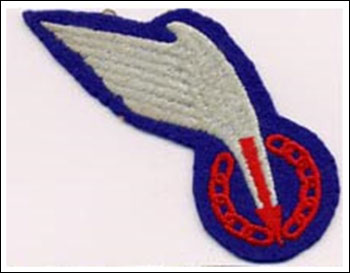
SAARF wing, worn by non-Americans of the unit on the right shoulder of their uniform sleeve. American members of the unit preferred to wear it near the right cuff, similar to the pathfinder wing. (Photo by the author) |

SAARF shoulder title, worn by non-American members of the unit on the left sleeve, below the wing. Because of the general unfamiliarity with titles to Americans, they usually did not wear it. (Photo by the author) |
| * * * |
Show Notes
Bibliography of sources consulted:
Books:
Breuer, William B., Geronimo! American Paratroopers in WWII; New York; St. Martin Press; 1989
Critchell, Laurence; Four Stars in Hell; MacMillan; New York; 1947
Nichols, John and Tony Rennel; The Last Escape: The Untold Story of Allied Prisoners of War in Germany, 1944-1945; UK; Penguin Books; 2003
Smith, Bradley F.; The Shadow Warriors - O.S.S. and the Origins of the C.I.A. ; New York; Basic Books; 1983
Whittaker, Len; Some Talk of Private Armies; Albanium Publishers; London, UK; 1984
Articles:
Downing, Ben; “A Visit with Patrick Leigh Fermor, Part 2”; The Paris Review Daily; 24 May 2013
Hughes, Les; “The Allied Airborne Reconnaissance Force (SAARF)”; Trading Post; issue unknown; 1991
“Obituary – General Paul Aussaresses”; London Telegraph; 4 December 2013
Internet sources: (authors identified by how they posted)
Author unknown: “Special Allied Airborne Reconnaissance Force”; posted on Wikipedia; n.d.
Capp, Jimmy; “SAARF, Special Allied Airborne Reconnaissance Force”; posted on www.usamilitariaforum.com; 14 June 2009
Dilley, Michael F.; “A Short History of U.S. Airborne Units in World War II;” Tidbits; 21 August 2012
Durand (not further identified); “SAARF, POWs, and Tensions between Allies”; posted on forum.axishistory.com; 5 June 2003
Jedburgh22 (not further identified); “SAARF”; posted on www.ww2talk.com; 31 October 2010
© 2025 Michael Dilley.
Written by Michael F. Dilley. The author retains the copyright to this piece bearing his name. No reproduction, copying, or other forms of retrieval without permission. If you have questions or comments on this article, please contact Michael F. Dilley at: mfdilley@gmail.com.
About the author:
Michael F. Dilley has a B.A. in History from Columbia College in Missouri and is a retired U.S. Army Military Intelligence officer. He served two tours in Viet Nam and six and one-half years in airborne units. In the field of military history, he was written three books (one of them as co-author) and contributed to two anthologies. He has also written many articles and book reviews dealing with special purpose, special mission units.
* Views expressed by contributors are their own and do not necessarily represent those of MilitaryHistoryOnline.com.

